As a business manager of Fairwill Display, I understand the importance of securing your glass showcase. Here I’ll tell you how to install a glass showcase lock. This will help you, especially if you’re a wholesaler, or store fixture supplier.
Table of Contents
ToggleTools and Materials Needed
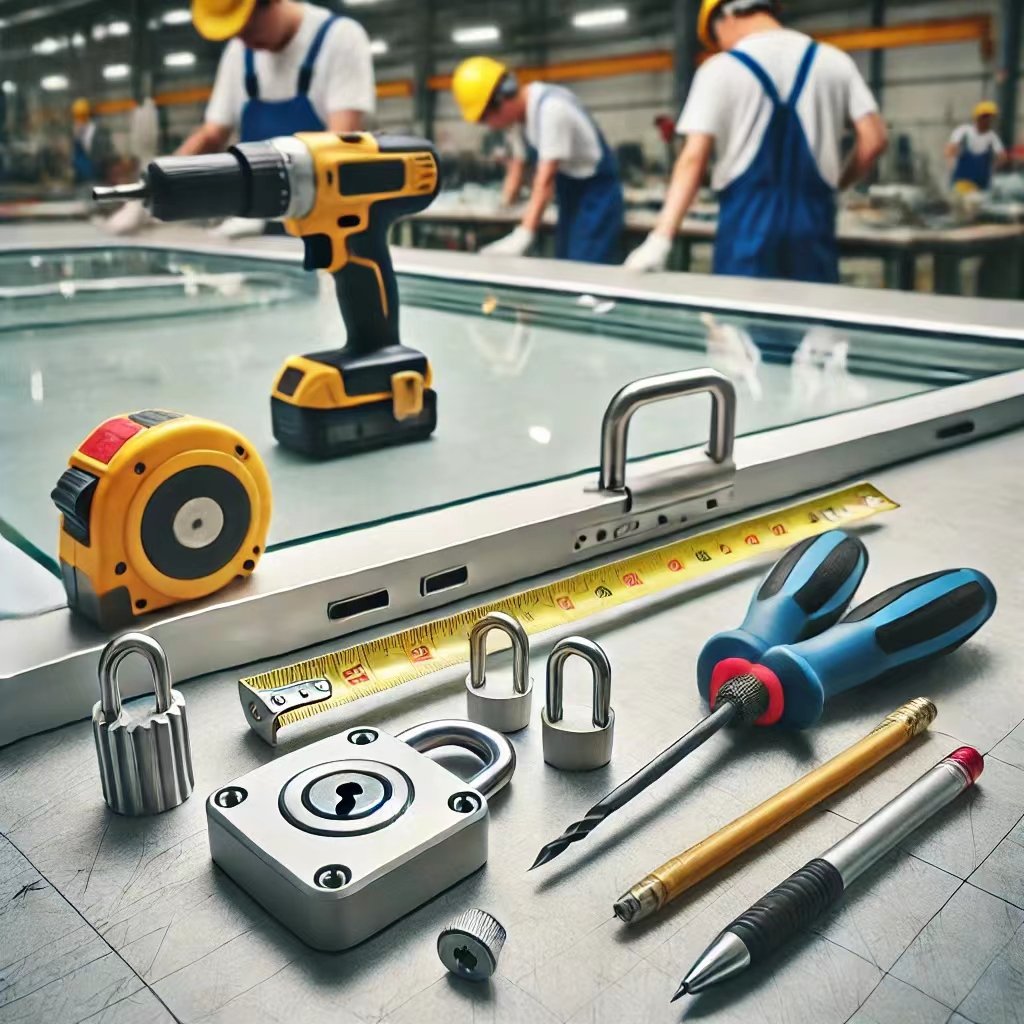

First, gather all the necessary tools and materials. You will need a glass showcase lock, a screwdriver, a measuring tape, a pencil, and a drill. Ensure you have the lock that suits your showcase.
Step 1: Choose the Right Lock
Choosing the right lock for your glass showcase is crucial. As the owner of Fairwill Display, I understand how important it is to secure your products. The lock you choose needs to fit perfectly and provide adequate security. A good lock not only secures your showcase but also enhances its overall look. Our locks are designed to match the elegance and durability of our glass showcases. This step will guide you through selecting the best lock for your needs.
Identifying the Type of Showcase
First, consider the type of glass showcase you have. Different showcases may require different locks. For example, a sliding door showcase will need a different lock compared to a hinged door showcase. At Fairwill Display, we offer a variety of locks to suit different types of showcases. Understanding the type of showcase you have is the first step in choosing the right lock.
Assessing Security Needs
Next, think about the level of security you need. If you are a boutique store owner or a wholesaler, the security requirements might differ. Some showcases need higher security, especially if they display valuable items. For such cases, we recommend high-security locks that are difficult to tamper with. Our locks at Fairwill Display are designed to provide maximum security while being easy to install and use.
Considering the Showcase Material
Moreover, consider the material of your glass showcase. Our showcases are made of tempered glass and E1 grade board, ensuring durability and safety. The lock you choose should complement these materials. For instance, a metal lock might be more suitable for a sturdy glass showcase. Matching the lock material with the showcase material ensures not only security but also aesthetic appeal.
Evaluating Usability
Additionally, think about the usability of the lock. If you frequently need to access the showcase, you might prefer a lock that is easy to open and close. Convenience is key, especially in a busy retail environment. At Fairwill Display, we understand the needs of our clients, like Ariel from Sweden, who value both affordability and functionality. Our locks are designed to be user-friendly, ensuring that you can access your showcase easily while keeping it secure.
Balancing Security and Budget
Furthermore, budget plays a significant role in your decision. While you want a lock that is secure and durable, it should also be affordable. Many of our clients, like Ariel, are price-sensitive and look for cost-effective solutions. At Fairwill Display, we offer a range of locks that cater to different budgets without compromising on quality. This ensures that you get the best value for your money.
Lastly, don’t forget to check the compatibility of the lock with your showcase. Ensure the lock fits well and functions properly. A lock that is not compatible with your showcase can cause inconvenience and security issues. At Fairwill Display, we provide detailed specifications for our locks, making it easier for you to choose the right one. We also offer customer support to assist you in making the best choice.
In conclusion, choosing the right lock for your glass showcase involves considering several factors. From the type and material of the showcase to the level of security and budget, each aspect plays a crucial role. At Fairwill Display, we are committed to providing high-quality, affordable locks that meet the diverse needs of our international clients. By carefully selecting the right lock, you ensure the safety and aesthetic appeal of your glass showcase.
Step 2: Measure the Lock Placement
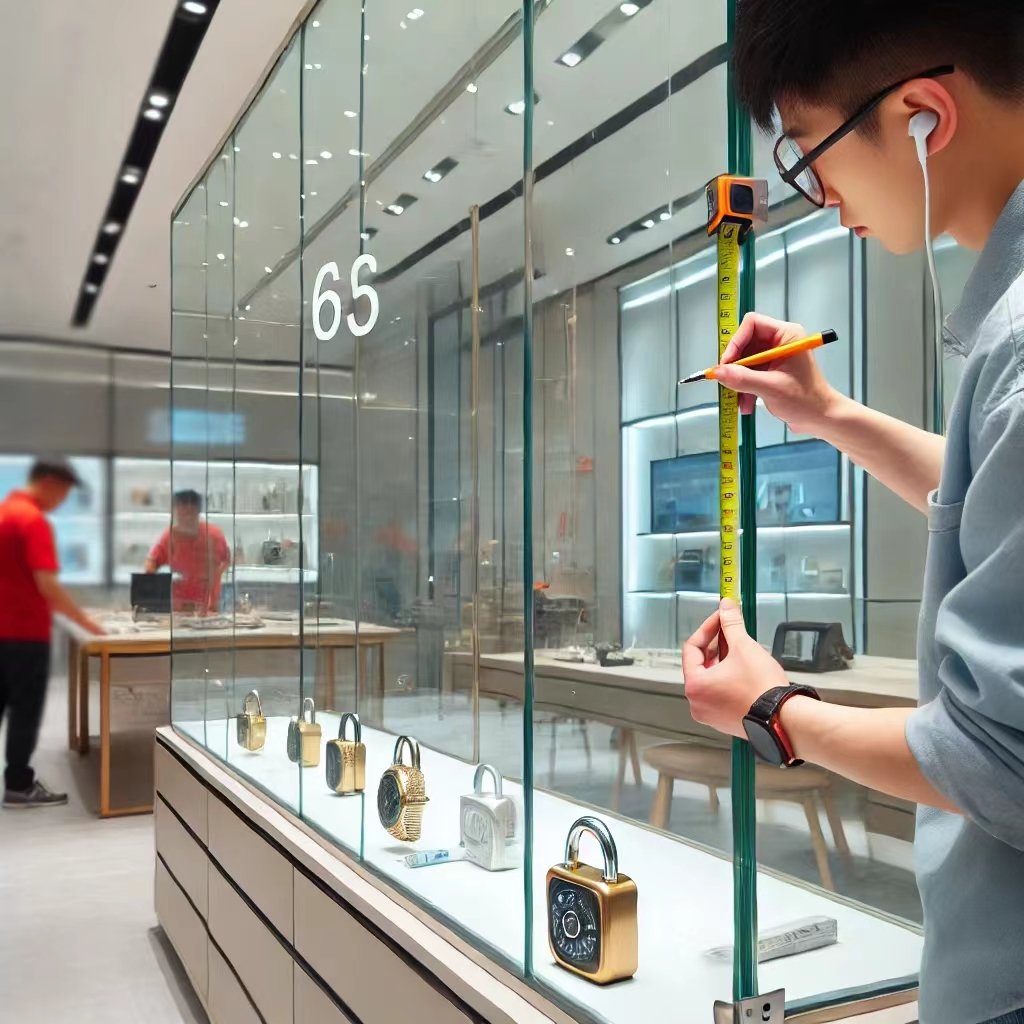

Measuring the lock placement is a crucial step in the installation process. It ensures that your lock is positioned correctly and functions smoothly. I always start by gathering my tools. You will need a measuring tape, a pencil, and a ruler. These tools help you get precise measurements. Precision is key in this step.
Measuring the Glass Door Width
First, I take the measuring tape and measure the width of the glass door. I note down the measurements. This helps me determine the center point of the door. The center point is where I will place the lock. If you have a sliding door, you should measure both doors to find the middle point. This ensures that the lock aligns perfectly when the doors are closed.
Double-Checking the Measurements
Next, I use the ruler to double-check my measurements. This step is important to avoid any mistakes. I place the ruler horizontally across the glass door and find the midpoint. I mark this point with a pencil. This mark will guide me in placing the lock. It’s a simple but crucial step.
After marking the midpoint, I decide the height at which the lock should be placed. Typically, the lock should be at a comfortable height, around the middle of the door. I measure from the bottom of the door to the desired height. I mark this point with a pencil as well. This ensures that the lock is not too high or too low.
With both the horizontal and vertical measurements marked, I now have a clear intersection point. This point is where I will drill the holes for the lock. I double-check the measurements to ensure accuracy. This step is vital because any mistake can affect the lock’s functionality. Ensuring the marks are precise saves time and effort later.
Considering the Lock Type
I also consider the lock type. Different locks may require different placements. For instance, some locks might need to be placed slightly off-center. I check the lock’s instructions to make sure I am marking the right spot. At Fairwill Display, we provide detailed instructions with our locks. This helps our customers install them easily and correctly.
Accounting for Glass Thickness
Additionally, I take into account the thickness of the glass. The lock placement should not be too close to the edge. This can weaken the glass and make it prone to cracking. I ensure there is enough distance from the edge to maintain the glass’s integrity. This consideration is important for safety and durability.
Finally, I review all the measurements and marks. I ensure they are accurate and align perfectly. If there are any discrepancies, I correct them before proceeding. This final check is essential to avoid any issues during the drilling and installation process. It’s better to take extra time in this step than to rush and make mistakes.
Measuring the lock placement might seem like a small step, but it is incredibly important. It sets the foundation for the entire installation process. With precise measurements, the lock will function properly and secure your showcase effectively. At Fairwill Display, we emphasize the importance of this step to ensure customer satisfaction and product durability.
Step 3: Prepare the Showcase
Preparing the showcase is a crucial step. It ensures the lock installation goes smoothly. First, gather all necessary cleaning supplies. These include a soft cloth, glass cleaner, and a small brush.
Cleaning the Corners and Edges
Use the small brush to clean the corners and edges. Dust often accumulates in these areas. Cleaning thoroughly prevents any debris from interfering with the lock mechanism. At this point, you should also check for any scratches or damage on the glass. If there are any, consider replacing the glass. At Fairwill Display, we provide high-quality tempered glass that is both durable and secure.
Preparing the Showcase Frame
After cleaning the glass, focus on the showcase frame. Wipe it down with a damp cloth. Pay special attention to the areas where the lock will be installed. This ensures that the lock fits snugly and securely. At Fairwill Display, we understand the importance of a well-prepared surface. It makes the installation process more efficient and effective.
Aligning the Showcase Doors
Additionally, ensure the showcase doors are aligned properly. Misaligned doors can cause issues when installing the lock. Slide the doors open and close a few times to check their alignment. If necessary, adjust the doors. Proper alignment ensures the lock functions correctly.
At this stage, inspect the showcase tracks if your showcase has sliding doors. Clean the tracks with a small brush and a cloth. Dirt and debris can accumulate in the tracks, hindering the door’s movement. Clean tracks allow the doors to slide smoothly, making lock installation easier. At Fairwill Display, we recommend this step to all our clients for better performance.
Ensuring Showcase Stability
Next, ensure the showcase is stable and level. An unstable showcase can cause problems during installation. Check the base and make any necessary adjustments. Stability is key to a secure lock installation. We always advise our customers to double-check the stability of their showcases.
After ensuring stability, prepare your tools for the next steps. Place them within easy reach. Having everything ready saves time and makes the process smoother. At Fairwill Display, we believe in efficient and organized preparation.
Finally, take a moment to review your measurements. Double-check the marks you made earlier. Accurate measurements are crucial for a successful installation. If the measurements are off, the lock may not fit correctly. This can lead to security issues. We always emphasize the importance of precision at Fairwill Display.
By thoroughly preparing your showcase, you set the stage for a successful lock installation. At Fairwill Display, we strive to provide the best guidance to our customers. Proper preparation ensures your showcase is secure and your products are safe.
Step 4: Drill the Holes


Drilling the holes is a critical step in installing your glass showcase lock. First, ensure you have the right drill bit for glass. A diamond-tipped bit is ideal because it can smoothly cut through glass without cracking it.
To begin, double-check the spots you marked earlier. Accuracy in marking these spots ensures that your lock will be perfectly aligned. Position the glass showcase on a stable surface. This stability helps prevent any unwanted movement during drilling.
Next, place a piece of masking tape over the marked spots. Masking tape provides extra grip for the drill bit and reduces the risk of the glass cracking. This small precaution can save you from potential damage.
Now, hold the drill at a 45-degree angle to the glass surface. Starting at this angle helps the drill bit gradually engage with the glass. Slowly increase the angle to 90 degrees as you begin drilling. This gradual approach prevents the bit from slipping and ensures a clean start.
As you drill, apply gentle, consistent pressure. Avoid pushing too hard. Too much pressure can cause the glass to crack. Instead, let the drill do the work. Patience is key here. Drilling through glass takes time and steady hands.
Continue drilling until you penetrate the glass fully. If you are drilling multiple holes, repeat the process for each marked spot. Remember to keep the drill bit cool. Overheating can damage both the bit and the glass. You can occasionally dip the bit in water to keep it cool.
Once the holes are drilled, gently remove the masking tape. Check the holes for any sharp edges. If you find any, use a small piece of sandpaper to smooth them out. This step ensures the lock will fit snugly and securely.
Step 5: Install the Lock
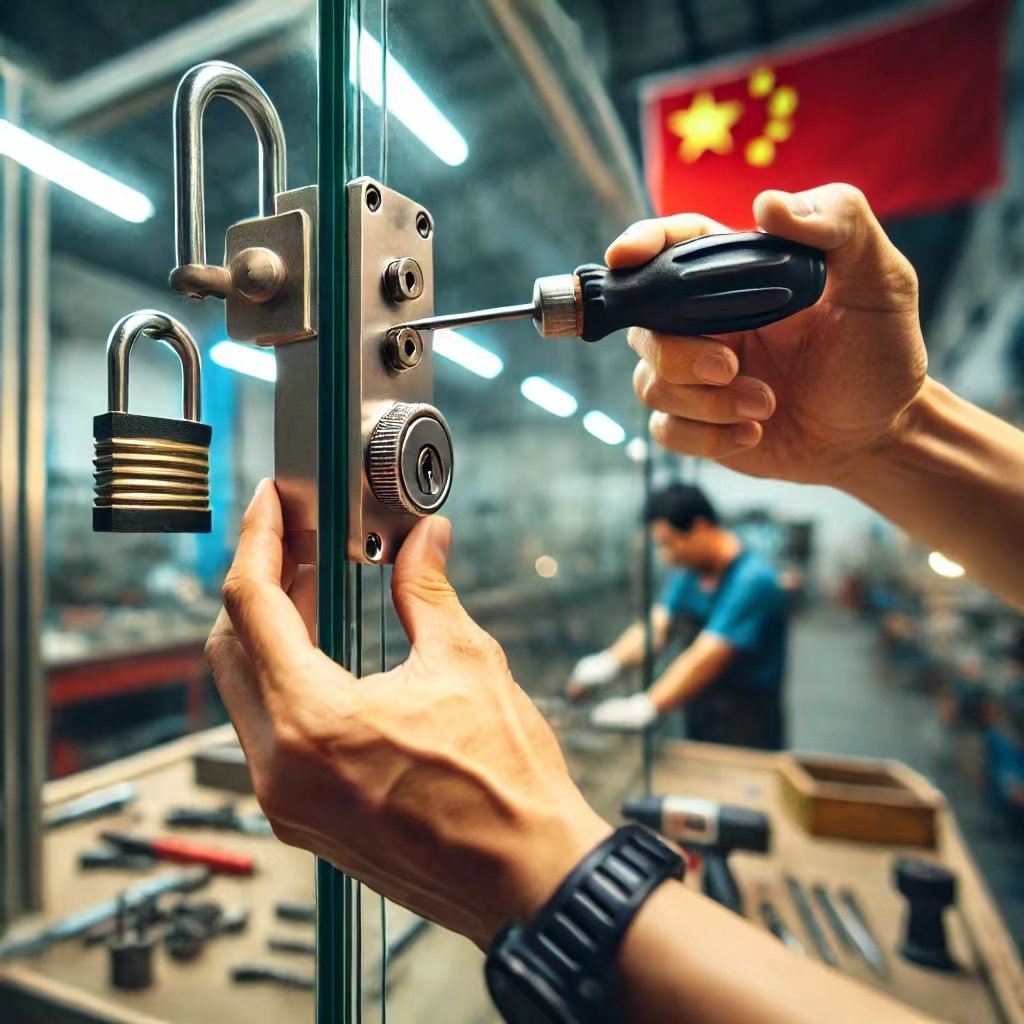
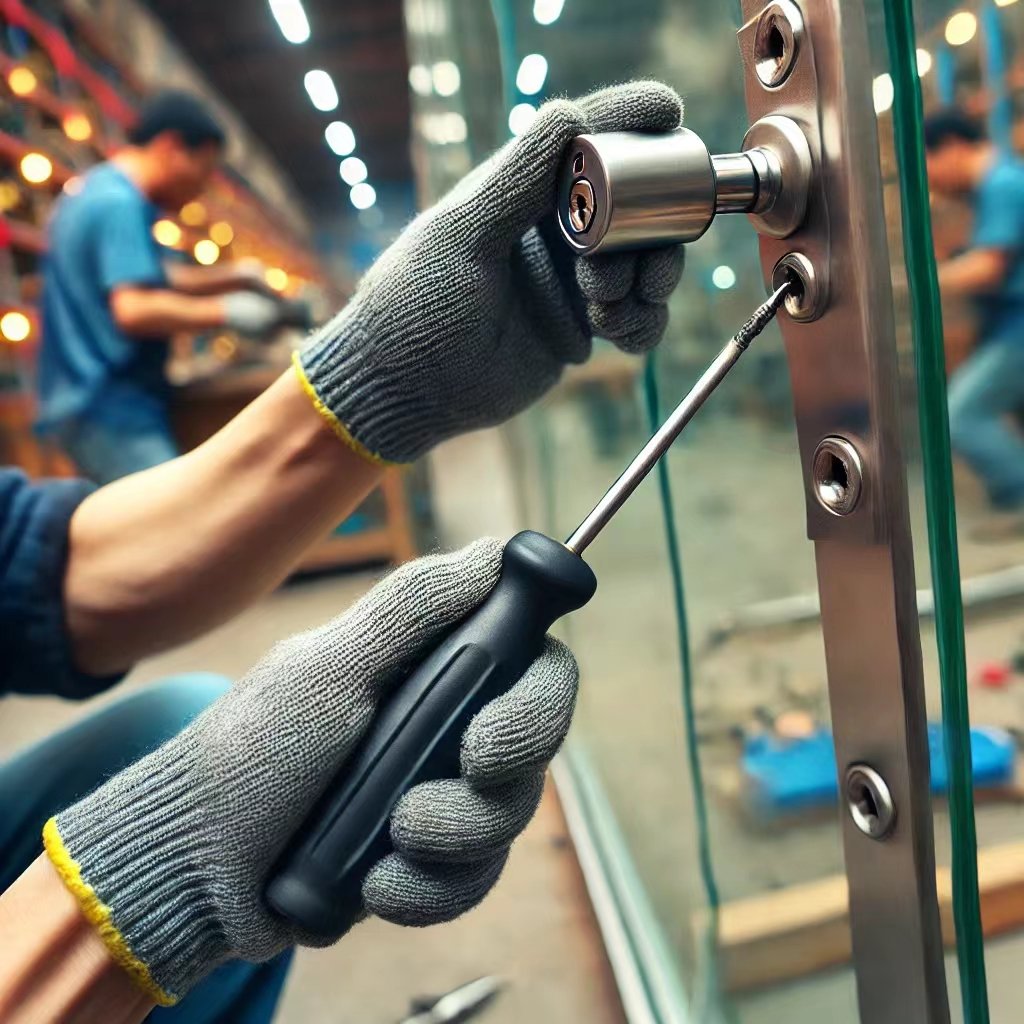
Now that we have drilled the holes, it’s time to install the lock. This step is crucial for ensuring the security of your glass showcase.
First, gather all the components of the lock. Ensure you have the lock body, screws, and any additional parts provided. Place these items within reach. Having everything ready will make the installation smoother.
Next, align the lock body with the holes you drilled. This step requires precision. Hold the lock body against the glass, ensuring the holes match up perfectly. This alignment is critical for the lock to function correctly.
Once aligned, take one of the screws and insert it into the hole. Hold the lock body steady with one hand. With the other hand, use a screwdriver to start tightening the screw. Turn the screwdriver clockwise to secure the screw. Make sure it’s firm but do not over-tighten. Over-tightening can damage the glass.
After securing the first screw, proceed with the remaining screws. Insert each screw into its respective hole and tighten it. Always ensure the lock body stays aligned throughout this process. Maintaining alignment is key to a properly functioning lock.
When all screws are in place, check the lock’s stability. Gently push and pull on the lock body to ensure it’s firmly attached. If it feels loose, tighten the screws a bit more. Stability is essential for the lock to provide adequate security.
Next, we need to attach any additional components. Some locks come with a latch or secondary lock mechanism. Follow the manufacturer’s instructions to attach these parts. Ensure they are also firmly secured.
Finally, test the lock. Slide the glass door and engage the lock. Check if it locks and unlocks smoothly. Testing is crucial to ensure everything is working correctly.
Step 6: Test the Lock
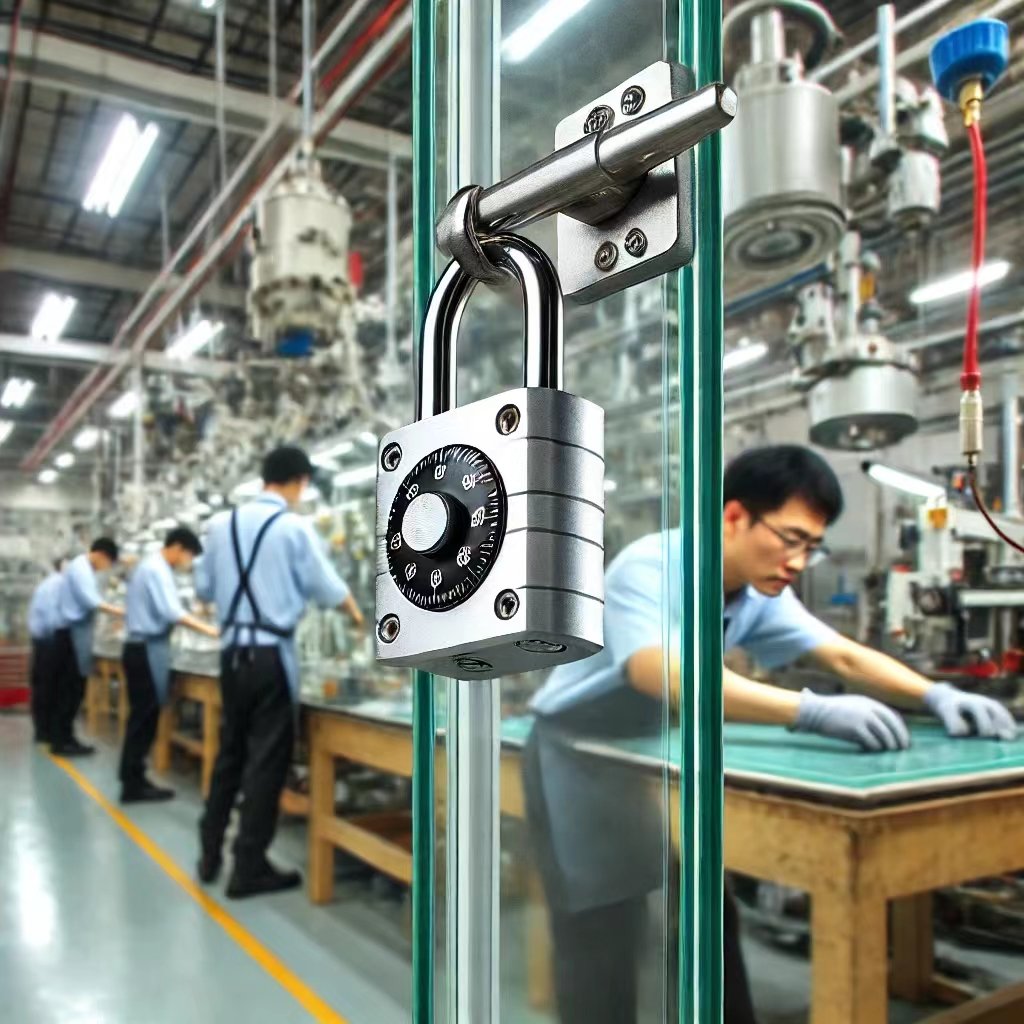

Testing the lock is a crucial step in ensuring the security of your glass showcase. After installing the lock, it’s essential to verify that it functions correctly. Here’s how I do it to make sure everything is secure.
Firstly, I gently close the glass showcase door and turn the key to lock it. I pay close attention to the way the lock mechanism engages. The lock should slide smoothly into place without any resistance. If it feels stiff or difficult to turn, there might be an issue with alignment or installation.
Next, I apply a little pressure to the locked door. This step is to ensure that the lock can withstand some force without giving way. If the door moves or rattles, it indicates that the lock might not be secured properly. This scenario often calls for tightening the screws or readjusting the lock placement. I find that even slight adjustments can significantly improve the lock’s effectiveness.
Afterward, I unlock the showcase and recheck the alignment. Sometimes, the door might not align perfectly with the lock mechanism. I look closely at the edges and see if they line up correctly when the door is closed. If they don’t, I might need to realign the door or the lock itself. This alignment ensures that the lock can engage smoothly every time I lock the door.
In addition, I inspect the screws and other hardware to make sure everything is tight and secure. Loose screws can cause the lock to become unstable. Using a screwdriver, I check each screw and tighten any that feel loose. This step is particularly important if the showcase will be in a high-traffic area where it will be frequently used.
Additional Tips
The Importance of Using Tempered Glass
For added security, consider using tempered glass for your showcase. At Fairwill Display, we ensure our products are made from E1 grade board and tempered glass. This type of glass is much stronger and safer than regular glass. It can withstand more impact, making it harder to break. If someone tries to tamper with your showcase, the tempered glass will offer better protection. This is especially important for store owners who display valuable items. Using tempered glass can give you peace of mind, knowing your items are well-protected.
Preparing the Showcase for Installation
Furthermore, ensure your glass showcase is clean before installation. A clean surface helps the lock adhere better and function properly. Dust and debris can interfere with the lock’s mechanism. I recommend wiping the glass and the area where the lock will be installed with a clean, damp cloth. This simple step can make a big difference in the longevity and effectiveness of your lock. Cleanliness is crucial for both the appearance and functionality of your showcase.
Regular Maintenance for Longevity
Moreover, regular maintenance of your glass showcase and lock is essential. Over time, dirt and grime can build up, affecting the lock’s performance. I suggest checking the lock periodically and cleaning it if necessary. If you notice any issues, such as difficulty in locking or unlocking, address them immediately. This proactive approach can prevent more significant problems down the line. Keeping your showcase in top condition will ensure it remains secure and looks attractive to your customers.
Seeking Assistance When Needed
Lastly, if you ever face issues during installation, don’t hesitate to seek help. At Fairwill Display, we offer customer support to assist you with any problems. You can contact us via email or phone. We are always here to help you. We understand that installing a lock can sometimes be challenging, but with our guidance, you can do it efficiently. Ensuring your showcase is secure is our priority, and we are committed to providing you with the best support and products.
Troubleshooting Common Issues
Ensuring Proper Alignment
Sometimes, the lock might not fit well. If this happens, check the alignment of the lock and the holes. It’s crucial to ensure that the holes are drilled at the correct spots. Misalignment can cause the lock to function improperly. I recommend double-checking your measurements before drilling. If you find any mistakes, you might need to adjust the holes or even drill new ones. Correct alignment is essential for the lock to work smoothly.
Checking the Lock Size
If the lock is still not fitting after checking the alignment, consider the size of the lock. Occasionally, the lock size might not match your showcase perfectly. In such cases, you may need to purchase a different lock size. At Fairwill Display, we offer various lock sizes to suit different showcases. Don’t hesitate to reach out to us for advice on the best lock size for your specific showcase. We are here to help you find the perfect fit.
Adjusting the Screws
Another common issue is difficulty in locking or unlocking the showcase. This problem can arise if the screws are too tight or too loose. Make sure the screws are tightened just right. Over-tightening can make it hard to turn the key, while loose screws can cause the lock to be unstable. Adjust the screws until the lock operates smoothly. Regularly check and adjust the screws to maintain the lock’s functionality.
Cleaning the Lock Mechanism
If the lock still doesn’t work properly, inspect for any debris or dirt in the lock mechanism. Dirt can clog the lock and make it difficult to operate. Clean the lock with a small brush or compressed air. Keeping the lock clean ensures it works efficiently. At Fairwill Display, we always emphasize the importance of maintenance for all our products. Cleanliness can significantly extend the life of your lock.
Finally, if you continue to experience problems, don’t hesitate to seek professional assistance. Sometimes, an expert’s touch is needed to resolve persistent issues. You can contact our customer support team at Fairwill Display for help. We are always ready to assist our customers with any installation issues. Your satisfaction and security are our top priorities, and we are committed to providing you with the best service and products.
Conclusion
Installing a glass showcase lock is simple if you follow these steps. Ensure you choose the right lock, measure accurately, and secure it well. At Fairwill Display, we provide high-quality glass showcases and locks. Our products are affordable and durable, perfect for our international customers. If you need assistance, feel free to contact us. Happy installing!
